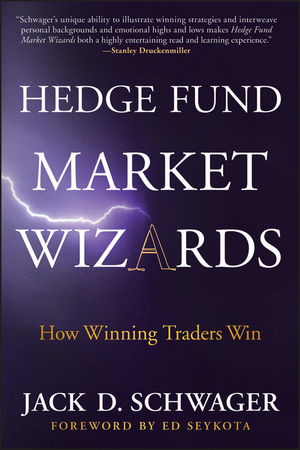Cornwall Capital’s Jamie Mai’s interview in Jack Schwager’s ‘Hedge Fund Market Wizards‘ is probably one of the most insightful that I’ve found in this indispensable book. Mai is documented under the chapter of ‘Multistrategy Players’ among other investors like Edward Thorp and Michael Platt.

To provide the context, Mai was one of those who successfully navigated the tumultuous waves of the housing and credit crisis in 2007 – 2008, and even cashed in on one of America’s greatest bubbles. He was played by actor Finn Wittrock in the movie ‘The Big Short‘ using a pseudonym ‘Jamie Shipley’ – allowing the public to have a brief understanding of what happened prior to the run-up to the Global Financial Crisis.

Jamie Mai’s investment philosophy is rather unique in that his firm (Cornwall Capital) does not have a set trading strategy. Their opportunity set includes detecting mis-pricings in asset prices in financial markets globally, allowing them to generate returns from market inefficiencies rather than developing convictions on whether a thesis about something is right or wrong. Simply put, Jamie focuses on whether an asset X is priced correctly relatively to the fundamental situation that X is in, instead of whether asset X is a good investment. As mentioned by him: “all of the trades … have reflected situations where we did not have a high level of conviction ourselves about the outcome we were seeking to make money on. Instead we had conviction that the odds were substantially mispriced, providing us positive expected value, even though we might not had a strong view about the direction of the underlying market.”
In 2006, Jamie and his firm discovered that it was cheap to bet against the housing market via shorting CDOs of subprime mortgage-backed securitisations (MBS). The profile was highly asymmetrical in that it costs very little to do so relative to its potential payoff (which was easily in the 10x-20x range). They dug deeper into the complex and esoteric system and started to develop a conviction of this trade as well when they studied the CDO market and the impending housing crisis, gradually building their short position against America’s subprime housing market which eventually collapsed in 2007 and led to a systemic crisis in 2008.
In the book’s interview, Jamie mentioned that “as a general observation, markets tend to overdiscount the uncertainty related to identified risks. Conversely markets tend to underdiscount risks that have not yet been expressly identified. Whenever the market is pointing at something and saying this is a risk to be concerned about, in my experience, most of the time, the risk ends up being not as bad as the market anticipated.”
This quote is perhaps Cornwall’s investment philosophy, detecting mispricings in various market developments and asset prices (are investors overdiscounting or underdiscounting risks?). Jamie’s firm also builds probability trees and gaming scenarios to further analyse if the mispricings are real and if there is a money-making opportunity.
Here are my main takeaways from the interview:
(I) Markets are not efficient
While clichéd (but vitally important), Jamie’s way of making money for his firm proves that markets are perhaps not efficient at all. If Cornwall could detect mispricings in the most liquid and developed financial market in the world (the US), it tells us that there is still opportunity for alpha generation out there and it is up to shrewd investors to devise creative strategies and systems to take advantage of it
(II) Standard pricing assumptions may not be entirely appropriate for all circumstances, creating opportunities
As Schwager wrote: “Mai seeks to identify trade opportunities that arise because prices, particularly for derivatives, are based on one of a number of standard pricing assumptions that may be entirely inappropriate based on the specific circumstances applicable to the given market. When these assumptions are unwarranted, they create mispricings and trading opportunities.”
Jamie uses options frequently to express his view of mispricings, pointing out that assumptions like ‘prices being normally distributed’ and ‘current correlations being good predictors of future correlations’ are in fact invalid. “Options are priced based on the assumption of a normal distribution, which effectively implies that future prices near the current level are most probable and that probabilities drop steeply for prices further removed from current levels. In some instances, however, large price moves are much more likely than implied by the normal distribution… In such circumstances, options priced in line with option-pricing models will be severely mispriced; specifically, out-of-the-money options will be priced far too cheaply. These mispricings can create profit opportunities particularly if the probability of a large price move is much greater than normal, then out-of-the-money options can provide a significant probability of gain, while being priced consistent with long-shot probabilities.”
(III) Ensure trades have an asymmetrical profile:
As Schwager wrote: “Mai structures trades so that the downside is severely limited, while the upside is open-ended. One common way of achieving this type of return/risk profile is by being a buyer of options (of course, only at those times when a mispricing is identified).”
(IV) Go for trades which have probabilities skewed to a positive outcome:
“As a general rule of thumb, Cornwall requires that the estimated gain if the trade succeeds multiplied by the probability of a positive outcome must be at least twice as large as the estimated loss if the trade fails multiplied by the probability of a negative outcome. Of course, these gain-and-loss amounts and their respective probabilities must be based on subjective estimates. Nonetheless, the key point is that the probability-weighted gain must be lopsided relative to the probability-weighted loss.”
Formulaic summary:
[(Estimated Gain * Probability of Win) / (Estimated Loss * Probability of Failure)] ≥ 200% of risk committed
To read the entire interview, grab Hedge Fund Market Wizards!
*image credits to Amazon.com & Linkedin*
2 thoughts on “My main takeways from market wizard Jamie Mai”